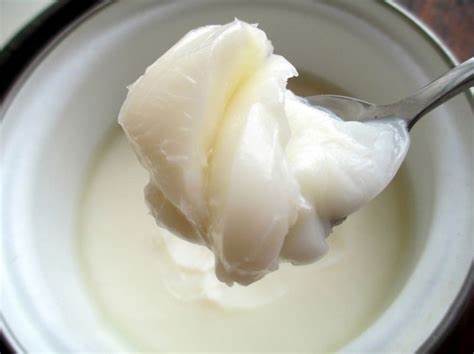Jenna J Bromm, Mike D Tokach, Jason C Woodworth, Robert D Goodband, Joel M DeRouchey, Jon A De Jong, Kiah M Berg, Courtney L Pohlen, Jordan T Gebhardt
 Two experiments
evaluated different fat sources and levels on growth performance, carcass
characteristics, and economic impact in commercial finishing pigs. In
experiment 1, 2,160 pigs (337 × 1,050, PIC; initially 37.3 ± 0.93 kg) were
used. Pens of pigs were blocked by initial body weight and randomly assigned to
one of four dietary treatments. Three of the four dietary treatments included:
0%, 1%, and 3% choice white grease. The final treatment contained no added fat
until pigs were approximately 100 kg, and then a diet containing 3% fat was fed
until marketing. Experimental diets were fed over four phases and were
corn–soybean meal based with 40% distillers dried grains with solubles. Overall,
increasing choice white grease decreased (linear, P = 0.006) average daily feed
intake (ADFI) and increased (linear, P = 0.006) G:F. Pigs fed 3% fat only
during the late-finishing phase (~100 to 129 kg) had similar G:F compared to
pigs fed 3% for the entire study during the late-finishing phase, and
intermediate G:F overall. Increasing fat tended to increase (linear, P = 0.068)
hot carcass weight (HCW). Feed cost increased (linear, P ≤ 0.005) and income over feed cost decreased (linear, P ≤ 0.041) as choice white grease increased. In Experiment 2, 2,011
pigs (PIC 1,050 × DNA 600; initially 28.3 ± 0.53 kg) were used. Pens of pigs
were blocked by location in the barn and randomly assigned to one of five
dietary treatments arranged in a 2 × 2 + 1 factorial with main effects of fat
source (choice white grease or corn oil) and level (1% or 3% of the diet) and a
control diet with no added fat. Overall, increasing fat, regardless of source,
increased (linear, P < 0.001) average daily gain (ADG), decreased (linear, P
= 0.013) ADFI, and increased (linear, P < 0.001) G:F. Increasing fat
increased (linear, P ≤
0.016) HCW, carcass yield, and backfat depth. There was a fat source × level interaction (P < 0.001) in carcass fat iodine value (IV),
where IV increased to a greater extent in pigs fed corn oil with only a small
increase in IV in pigs fed diets with choice white grease. In conclusion, these
experiments suggest that increasing fat from 0% to 3%, regardless of source,
produced variable responses in ADG but consistently improved G:F. Increasing
fat increased HCW, carcass yield, and backfat depth, but feeding diets
containing corn oil increased carcass IV. With the ingredient prices used, the
improvement in growth performance did not justify the extra diet cost from
increasing fat from 0% to 3% in most situations.
Two experiments
evaluated different fat sources and levels on growth performance, carcass
characteristics, and economic impact in commercial finishing pigs. In
experiment 1, 2,160 pigs (337 × 1,050, PIC; initially 37.3 ± 0.93 kg) were
used. Pens of pigs were blocked by initial body weight and randomly assigned to
one of four dietary treatments. Three of the four dietary treatments included:
0%, 1%, and 3% choice white grease. The final treatment contained no added fat
until pigs were approximately 100 kg, and then a diet containing 3% fat was fed
until marketing. Experimental diets were fed over four phases and were
corn–soybean meal based with 40% distillers dried grains with solubles. Overall,
increasing choice white grease decreased (linear, P = 0.006) average daily feed
intake (ADFI) and increased (linear, P = 0.006) G:F. Pigs fed 3% fat only
during the late-finishing phase (~100 to 129 kg) had similar G:F compared to
pigs fed 3% for the entire study during the late-finishing phase, and
intermediate G:F overall. Increasing fat tended to increase (linear, P = 0.068)
hot carcass weight (HCW). Feed cost increased (linear, P ≤ 0.005) and income over feed cost decreased (linear, P ≤ 0.041) as choice white grease increased. In Experiment 2, 2,011
pigs (PIC 1,050 × DNA 600; initially 28.3 ± 0.53 kg) were used. Pens of pigs
were blocked by location in the barn and randomly assigned to one of five
dietary treatments arranged in a 2 × 2 + 1 factorial with main effects of fat
source (choice white grease or corn oil) and level (1% or 3% of the diet) and a
control diet with no added fat. Overall, increasing fat, regardless of source,
increased (linear, P < 0.001) average daily gain (ADG), decreased (linear, P
= 0.013) ADFI, and increased (linear, P < 0.001) G:F. Increasing fat
increased (linear, P ≤
0.016) HCW, carcass yield, and backfat depth. There was a fat source × level interaction (P < 0.001) in carcass fat iodine value (IV),
where IV increased to a greater extent in pigs fed corn oil with only a small
increase in IV in pigs fed diets with choice white grease. In conclusion, these
experiments suggest that increasing fat from 0% to 3%, regardless of source,
produced variable responses in ADG but consistently improved G:F. Increasing
fat increased HCW, carcass yield, and backfat depth, but feeding diets
containing corn oil increased carcass IV. With the ingredient prices used, the
improvement in growth performance did not justify the extra diet cost from
increasing fat from 0% to 3% in most situations.
Translational Animal Science, Volume 7, Issue 1, 2023, txad018
https://doi.org/10.1093/tas/txad018
Registration hotline: 021-57634675
fax: 021-57632800
Copy right : 上海亘泰实业集团
Collaboration & Sponsorship: 021-57634938 57631012
ASASHotline:021-67868428
Site Map | CNZZStatistics
address:Shanghai songjiang jiuting town nine new highway 90 lane 3 nine new commercial building 15 floor

WeChat ID:asaschina
The pig nutrition international BBS CSIS